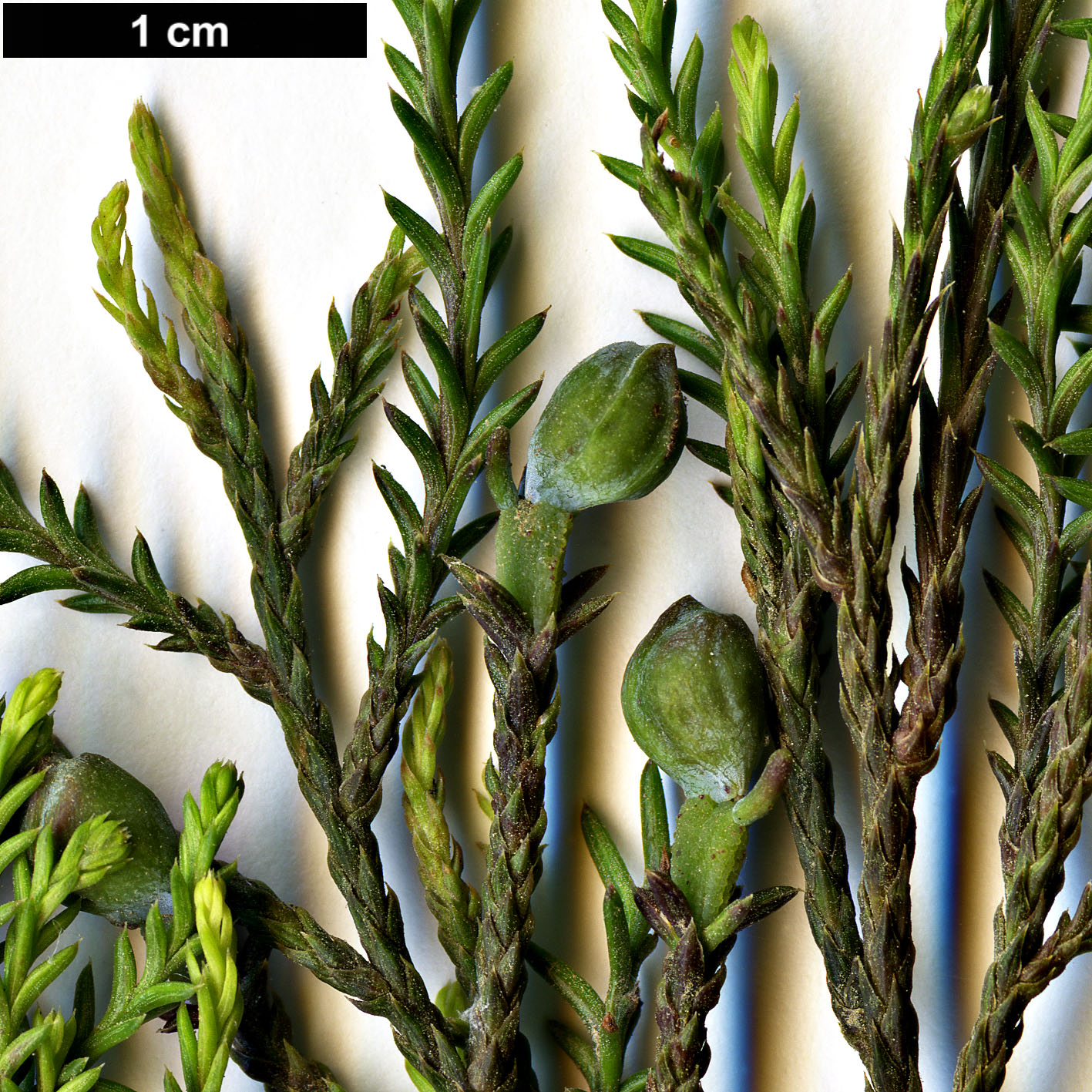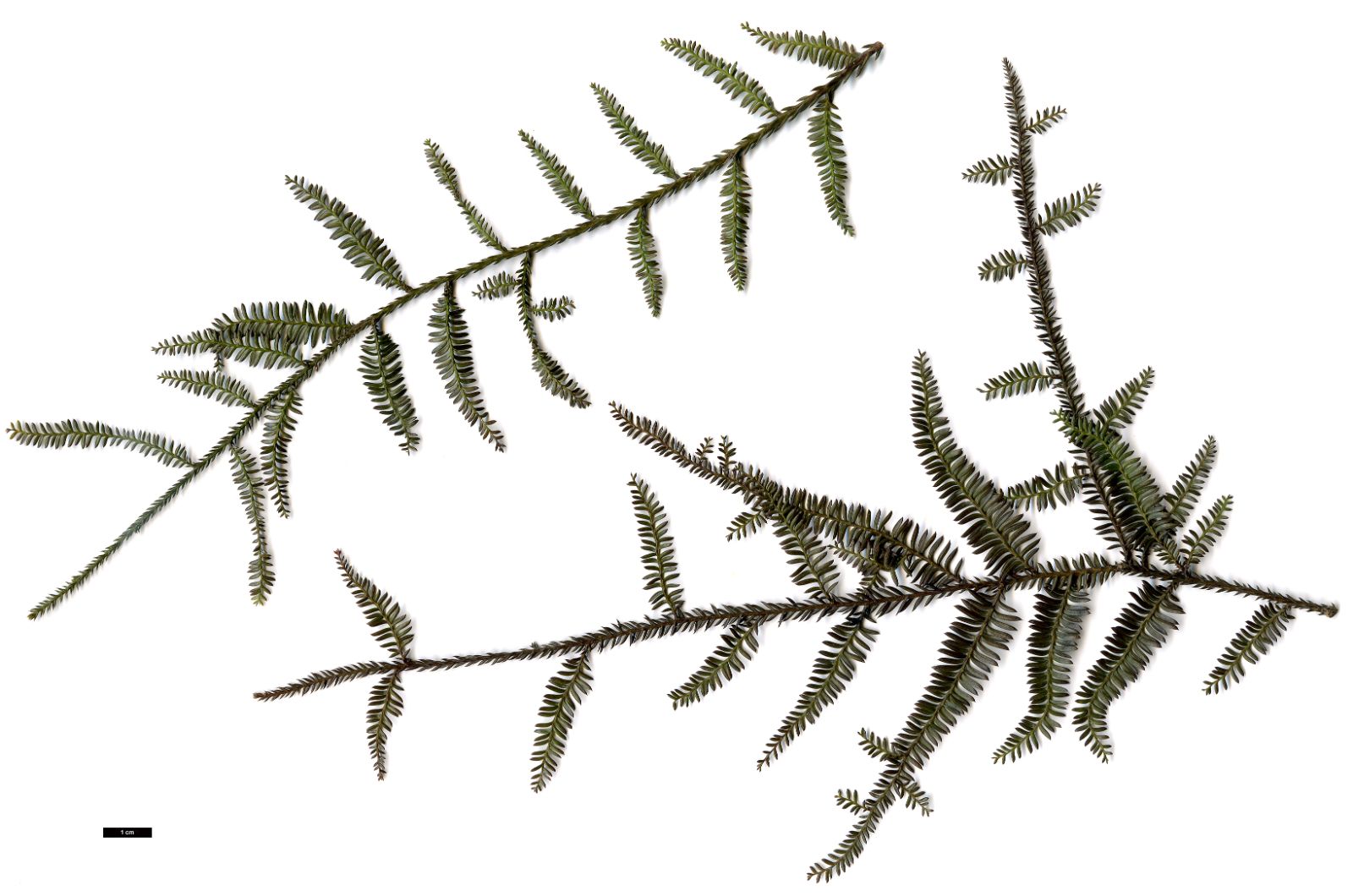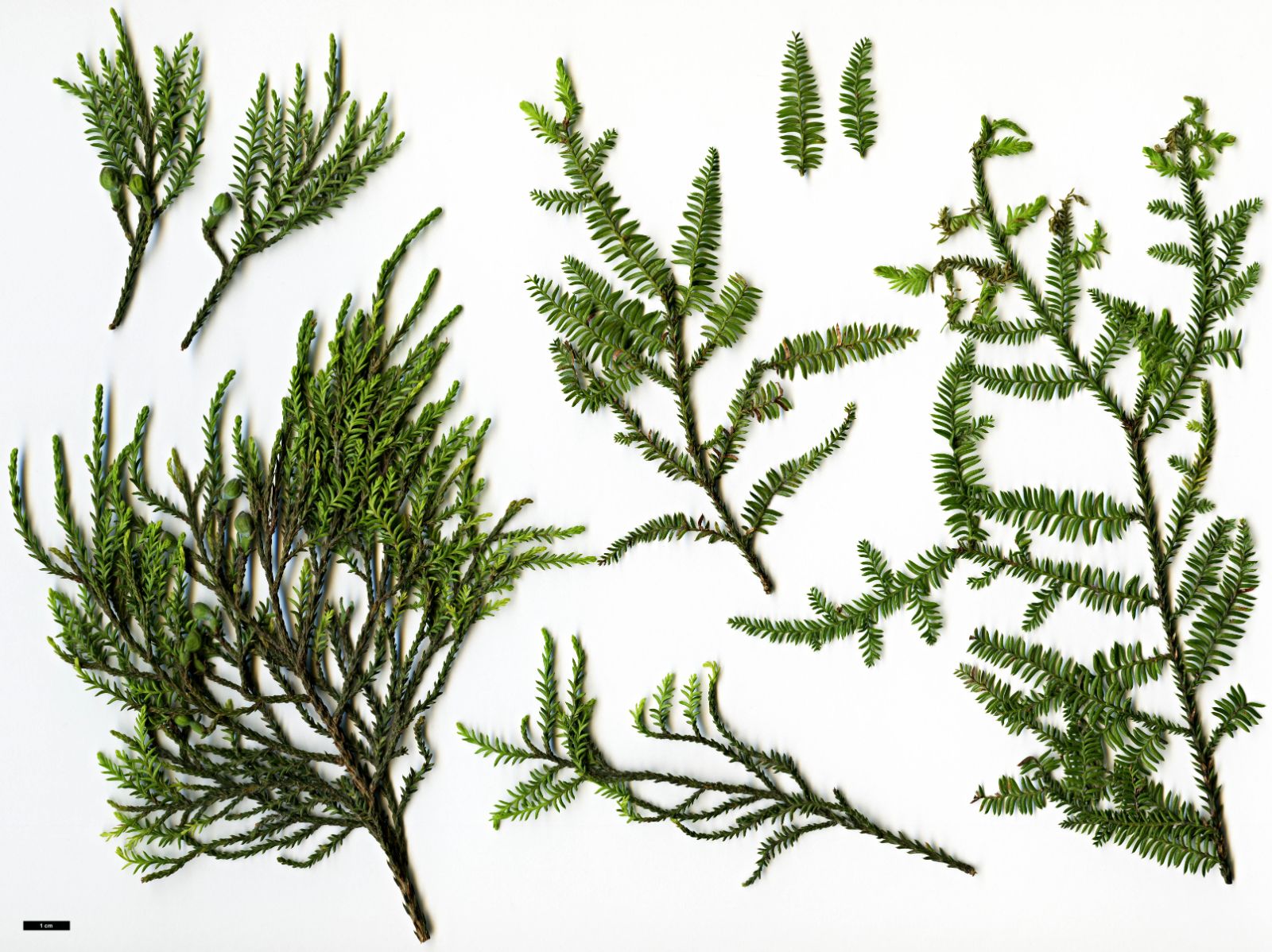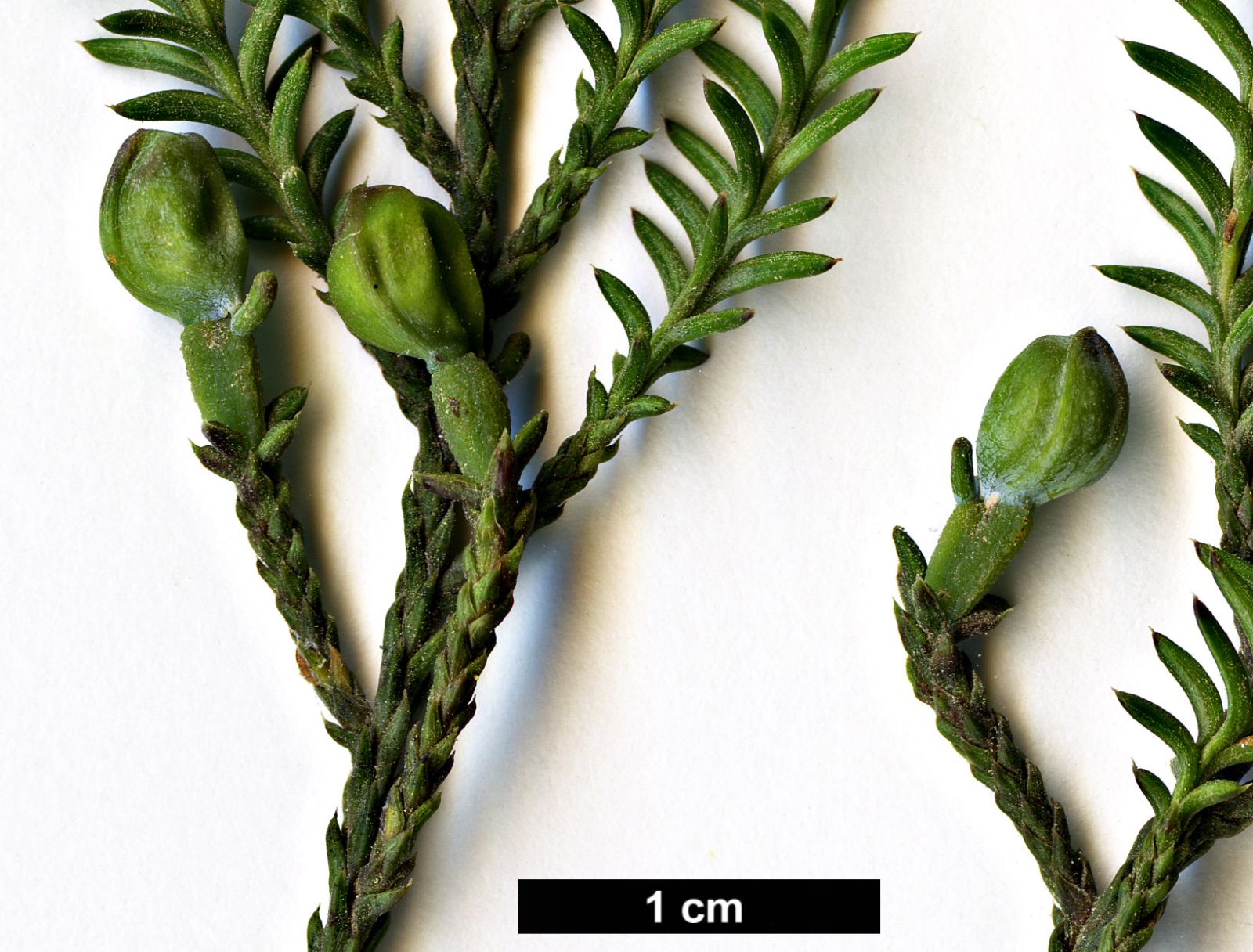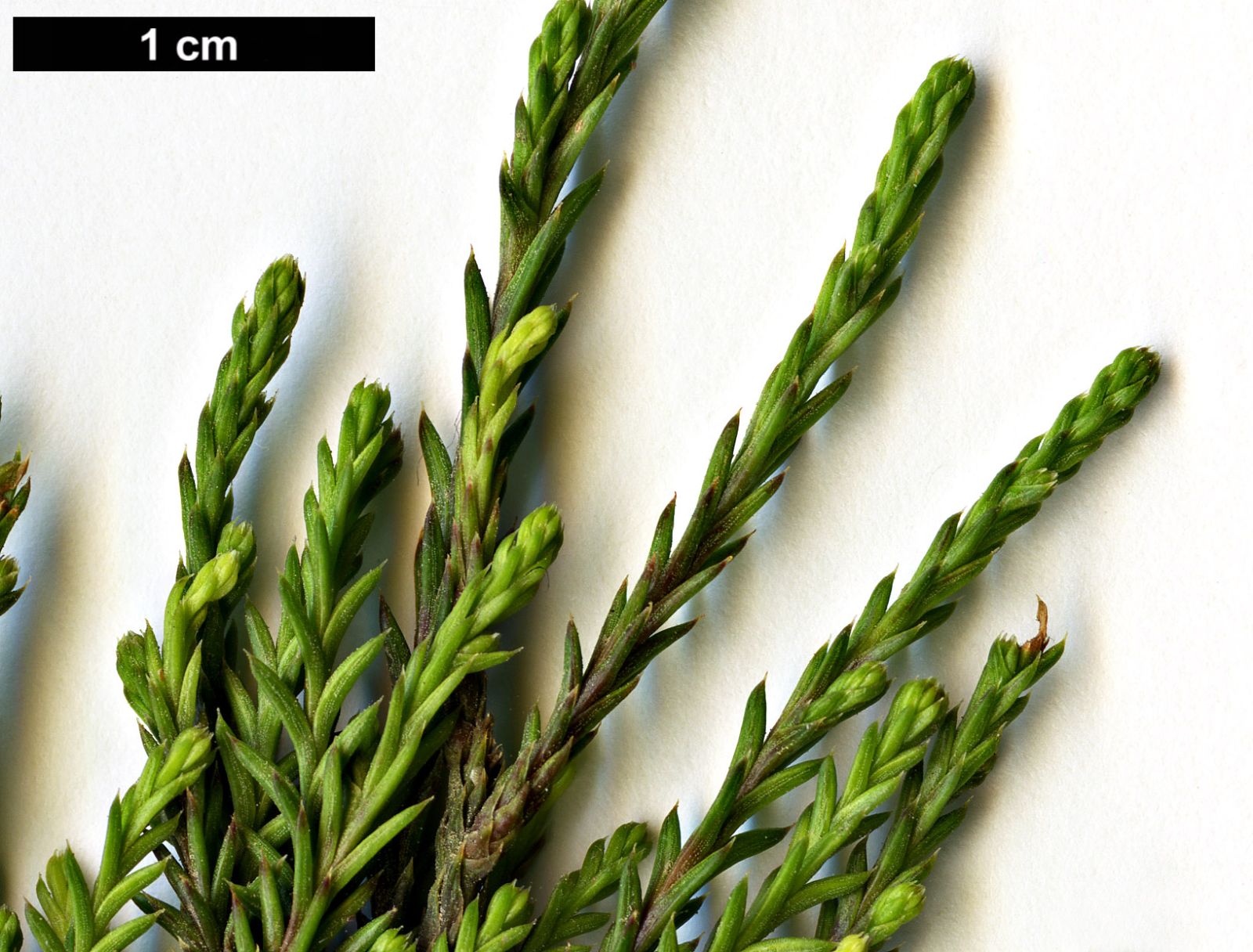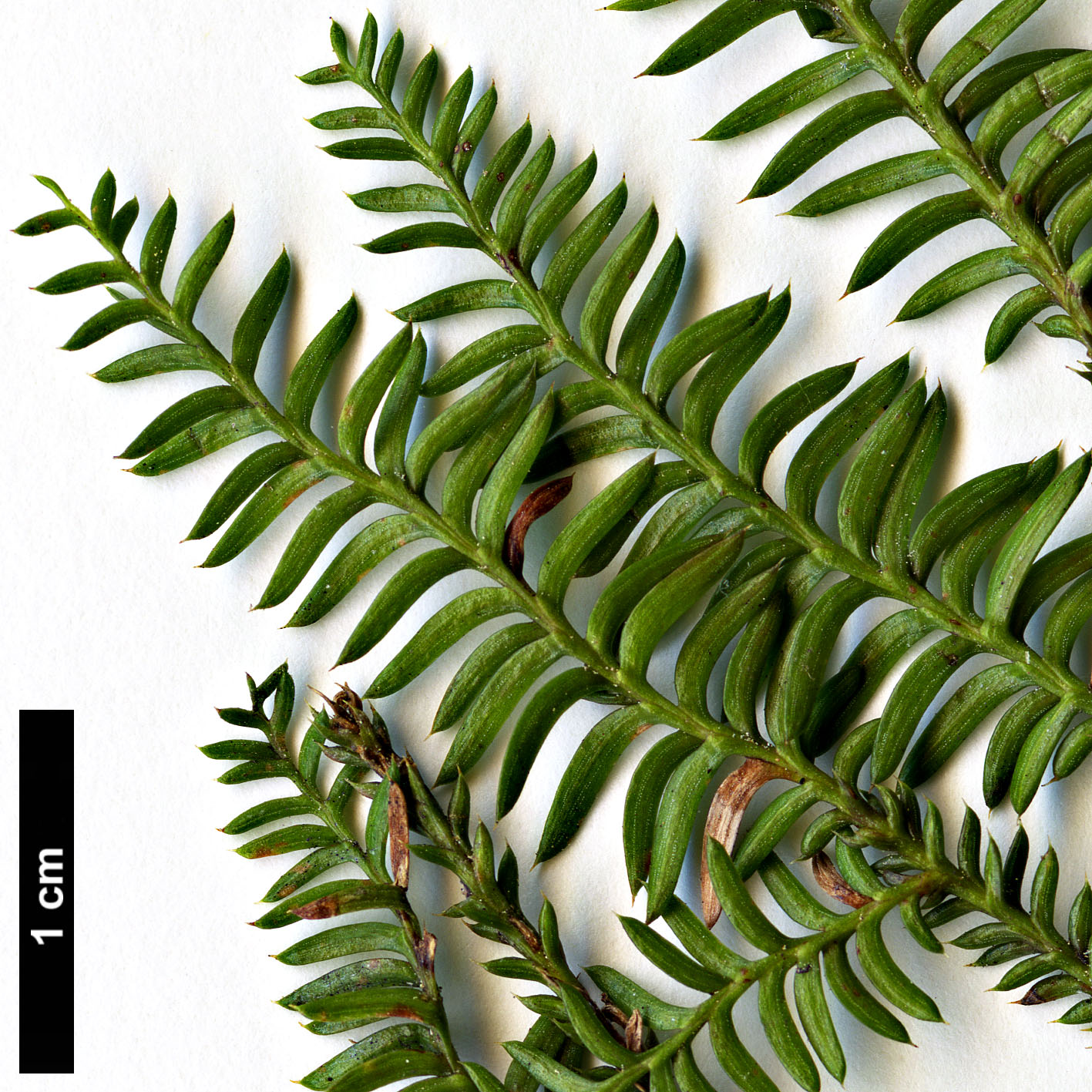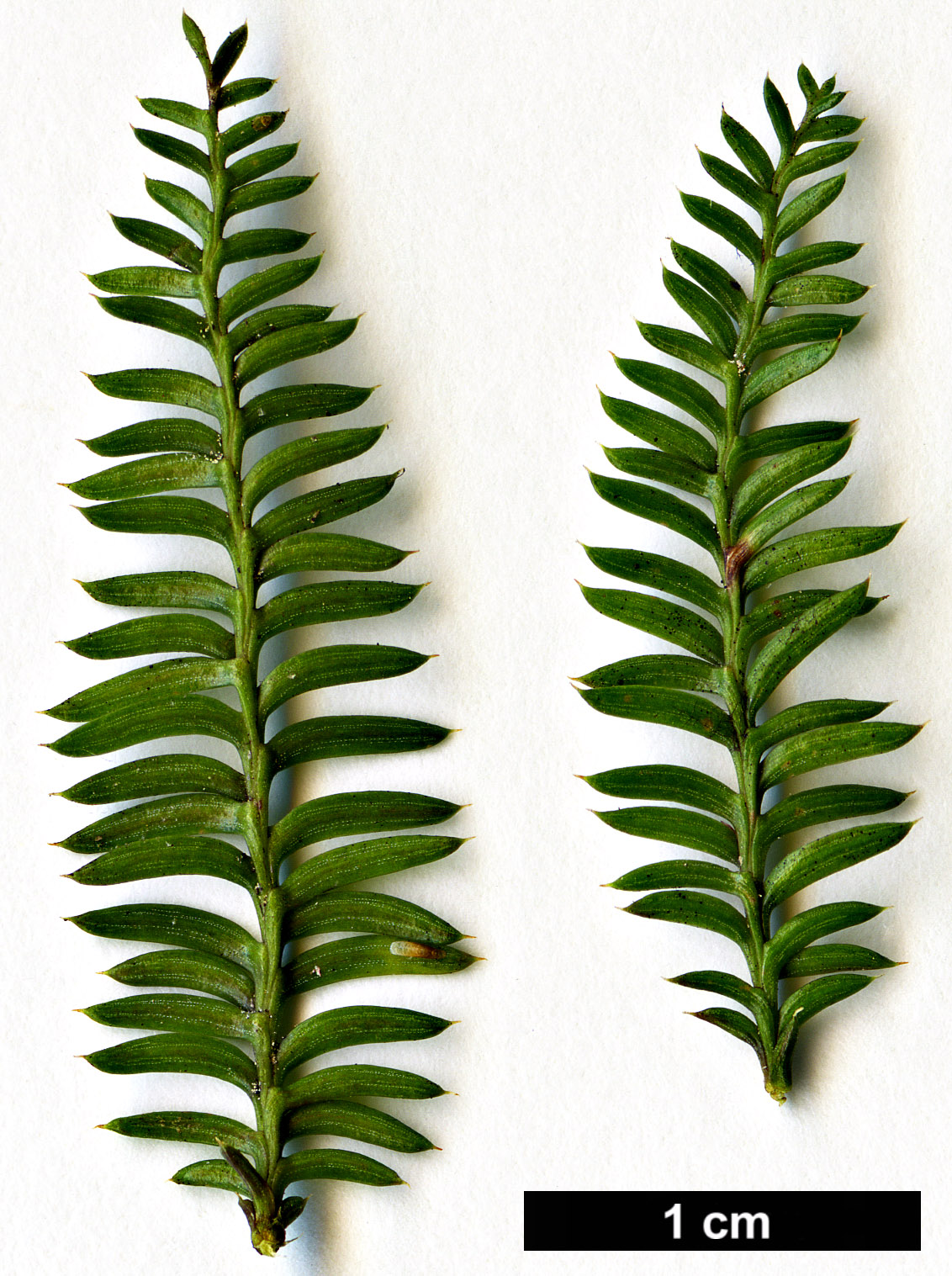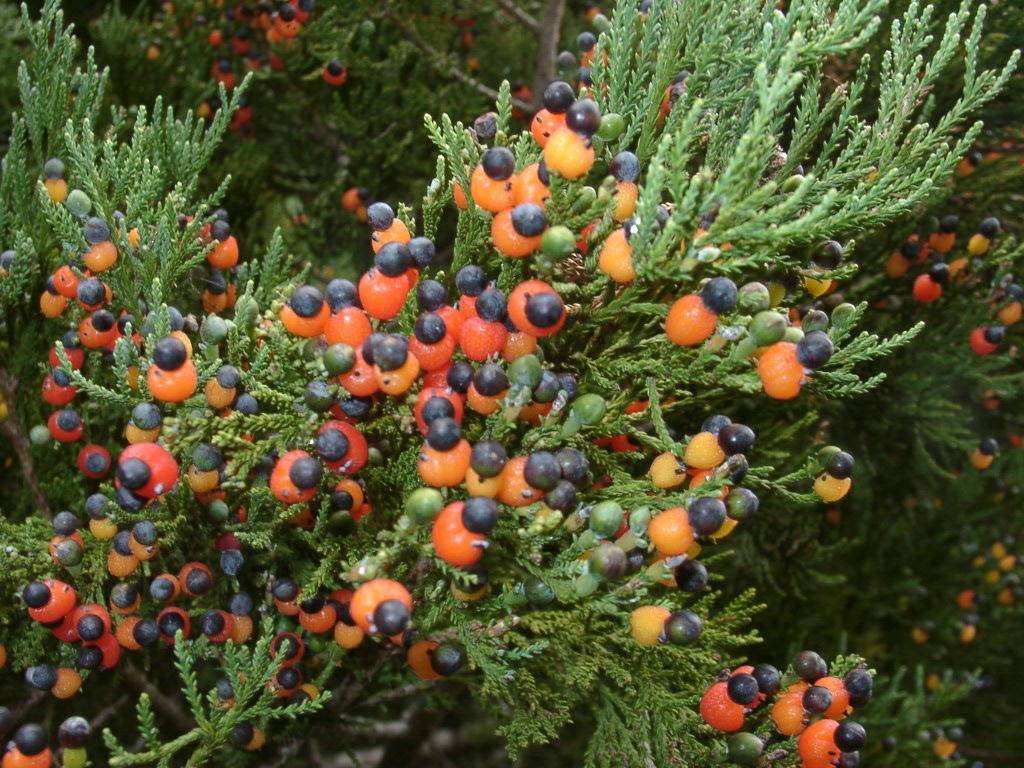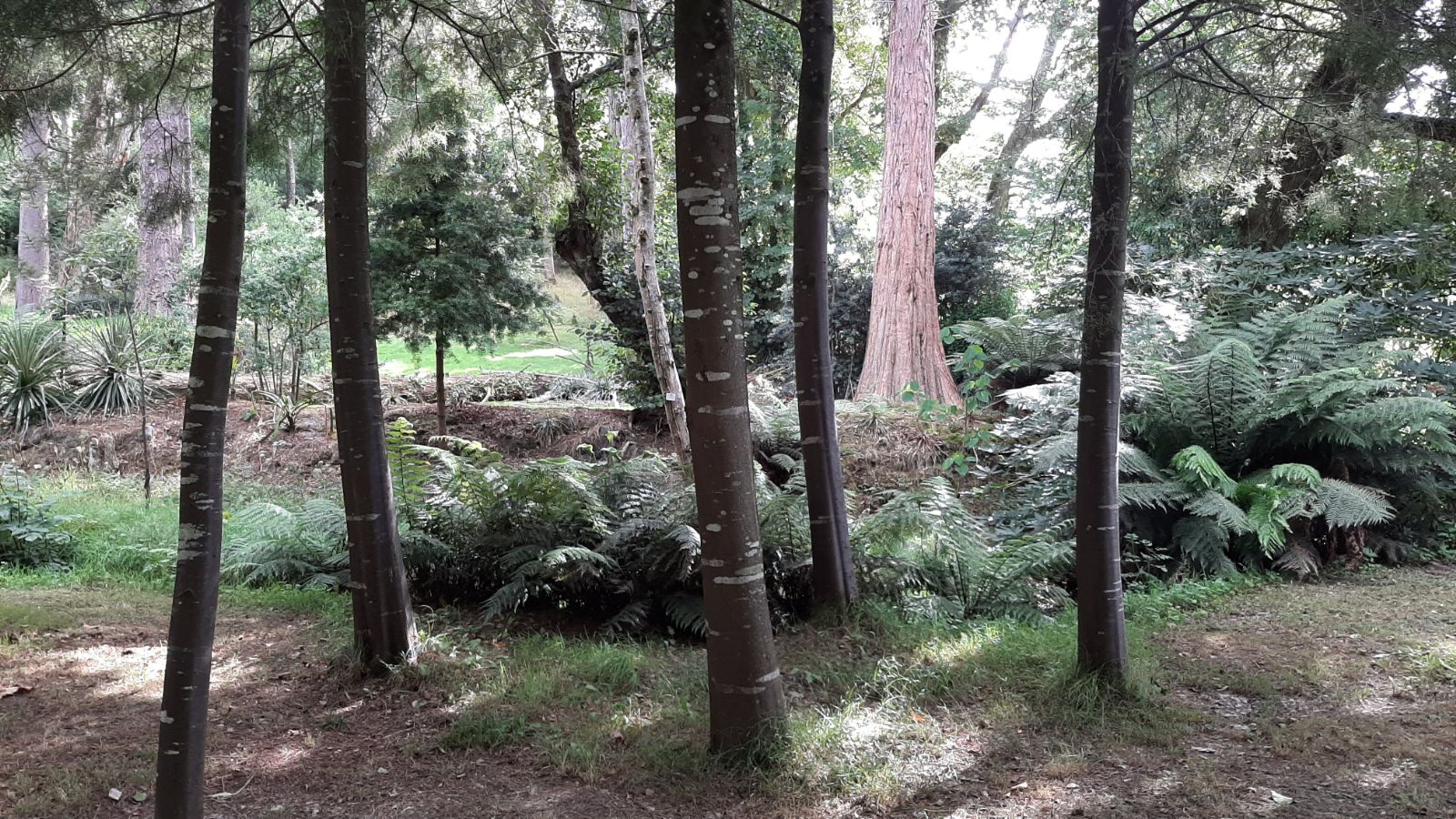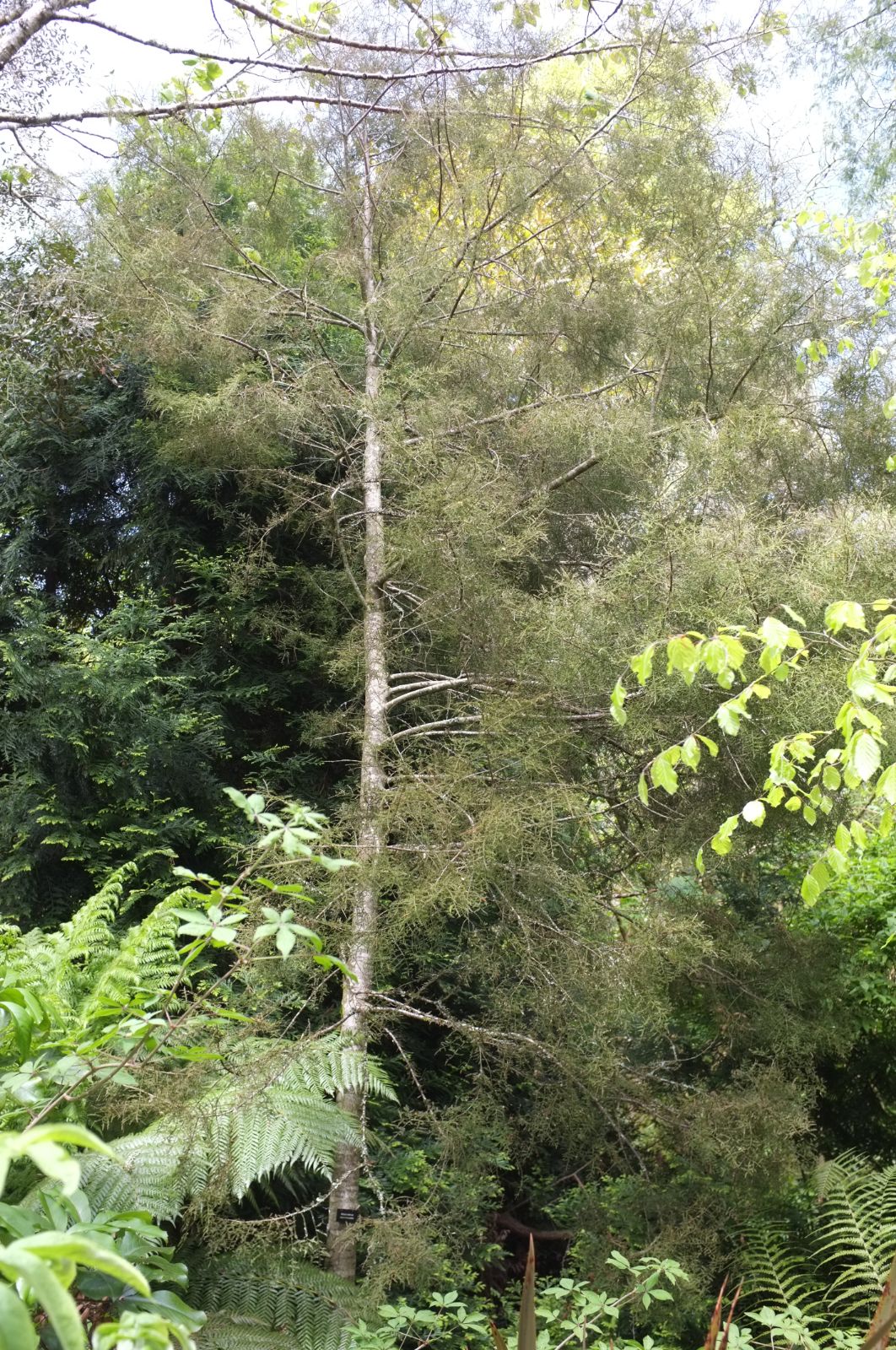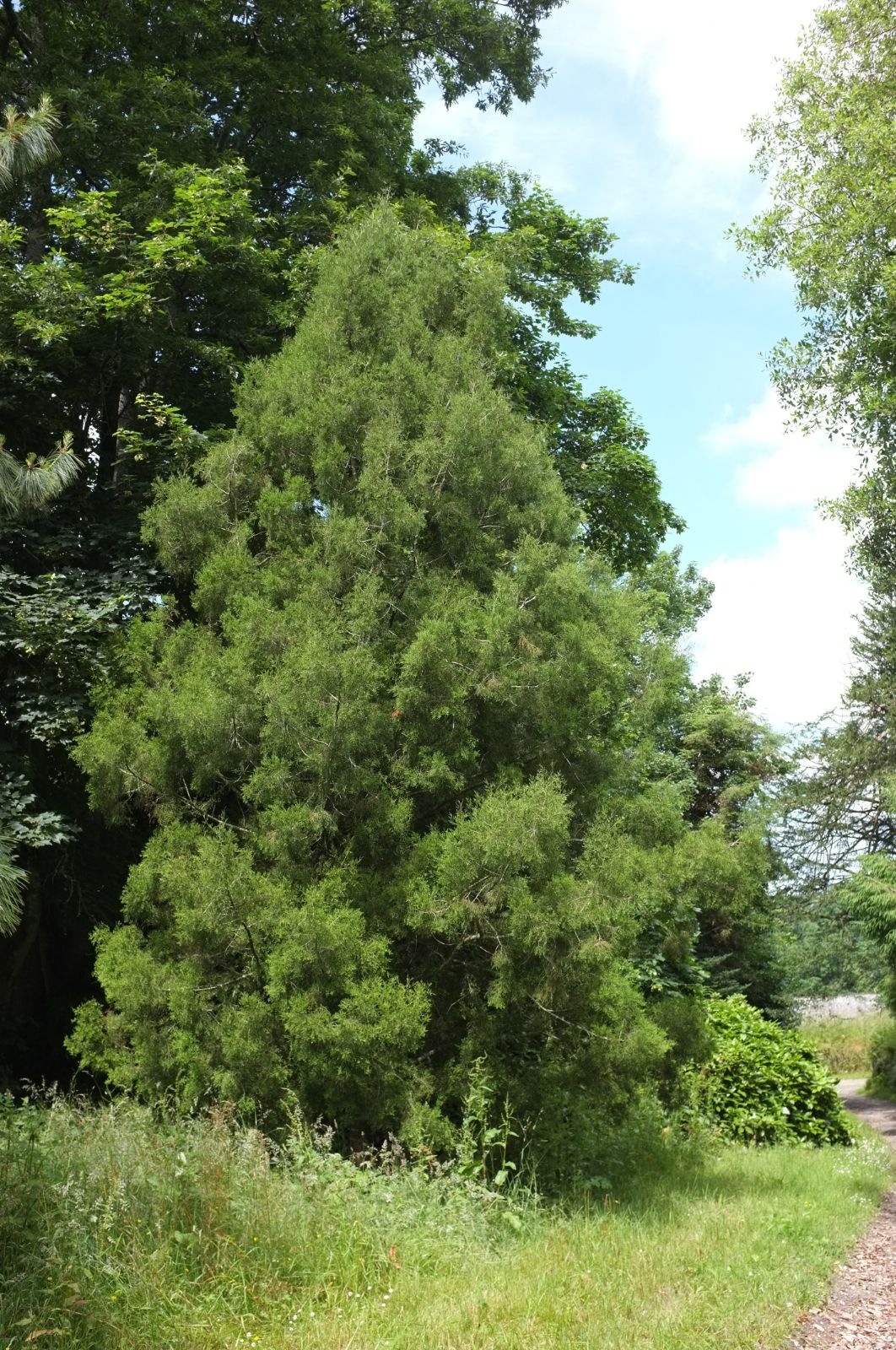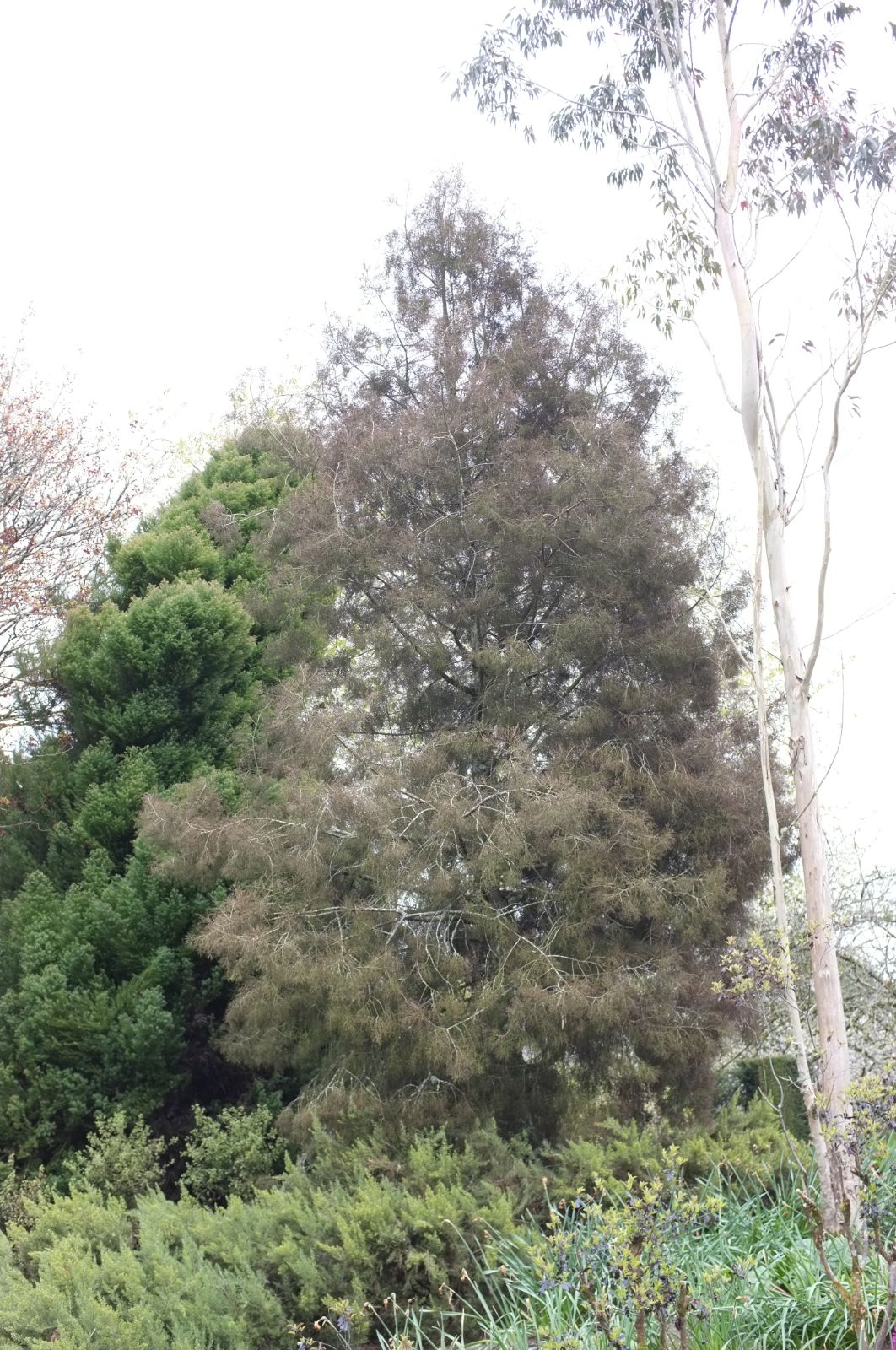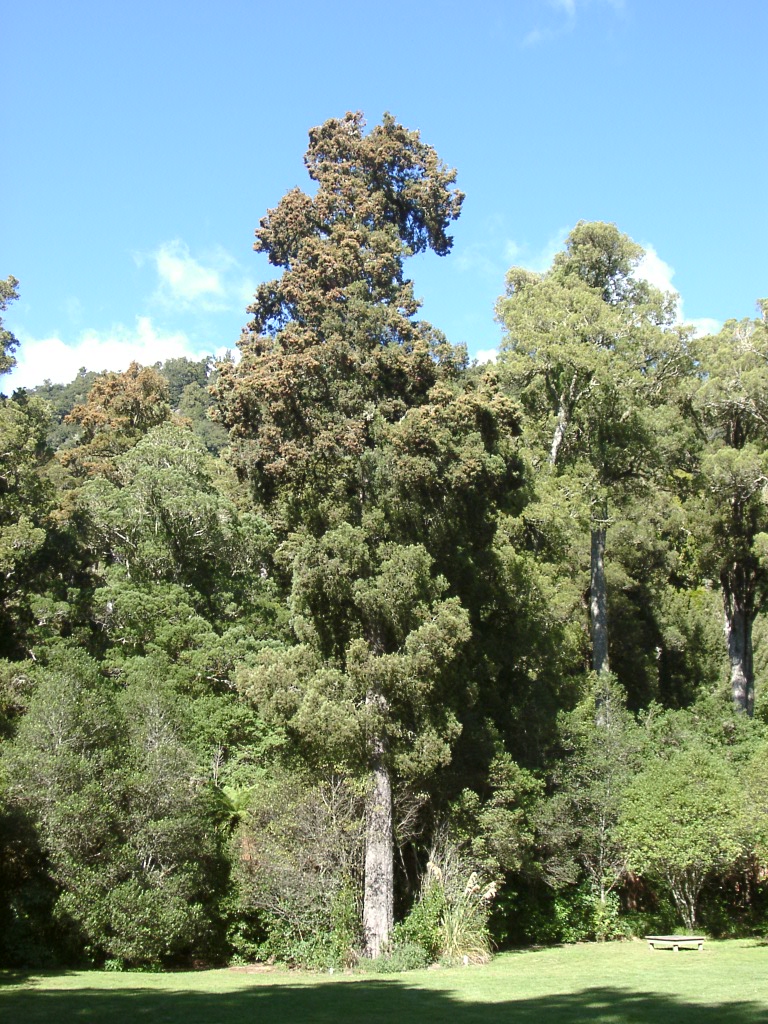Dacrycarpus dacrydioides
Credits
New article for Trees and Shrubs Online.
Recommended citation
'Dacrycarpus dacrydioides' from the website Trees and Shrubs Online (treesandshrubsonline.
Genus
Common Names
- Kahikatea
- New Zealand White Pine
Synonyms
- Dacrydium excelsum D. Don
- Podocarpus dacrydioides A. Rich.
Other taxa in genus
An evergreen tree up to 100 ft or more high, with a trunk 7 ft to 16 ft in girth, and drooping branches. Leaves of two kinds: (1) those of young trees which are arranged in two rows as in Taxodium distichum and are 1⁄6 to 1⁄3 in. long, 1⁄24 in. wide, curved and pointed; (2) those of mature trees which are arranged all round the branch, are only 1⁄16 to 1⁄8 in. long, and, in their smallest state, scale-like, resembling the leaves of a juniper or cypress. There are intermediate types and often both forms of leaf occur on one branch. The trees are unisexual, the female bearing a black, egg-shaped fruit about 1⁄6 in. long, the stalk of which is enlarged and becomes bright red and succulent.
Native of New Zealand, where it once formed extensive forests along the larger rivers and in swampy places; it was discovered during Cook’s first voyage, and during his second visit he measured a tree 19 ft 8 in. in girth, with a clean bole of 89 ft. Unfortunately, this splendid species is tender, and even in the mildest parts remains a small but very elegant tree.

